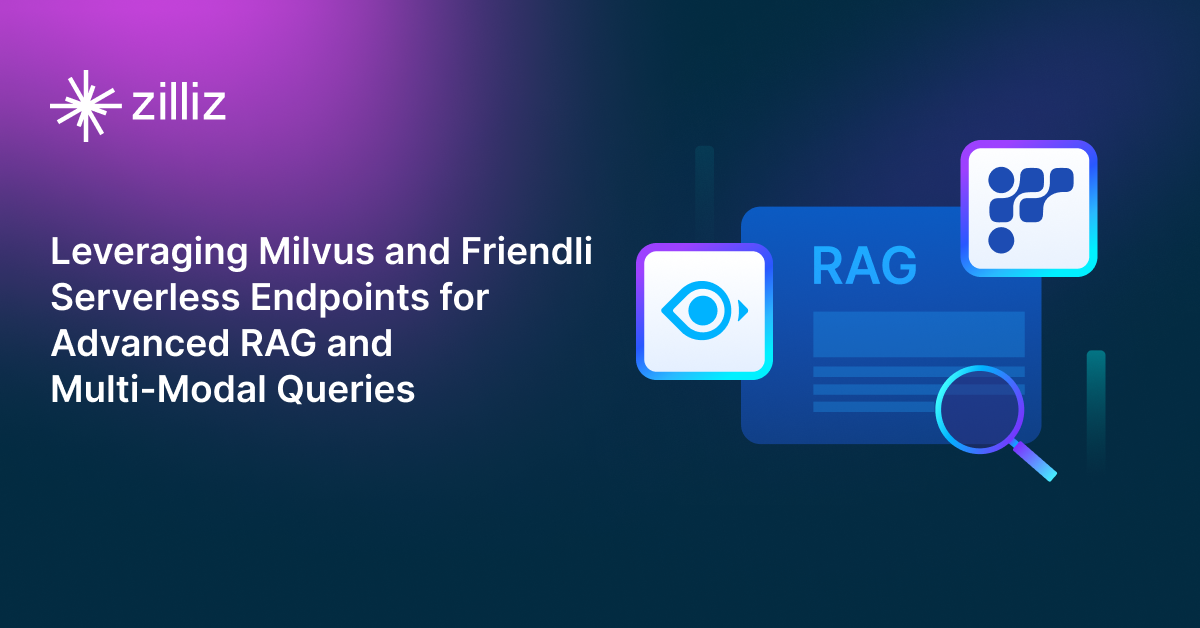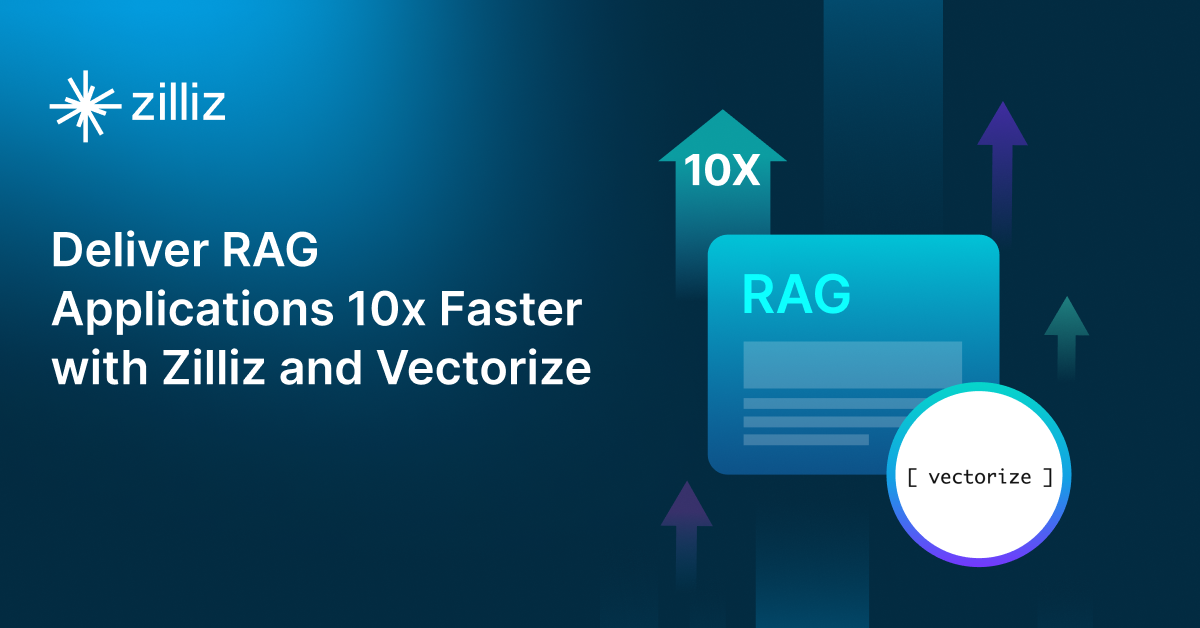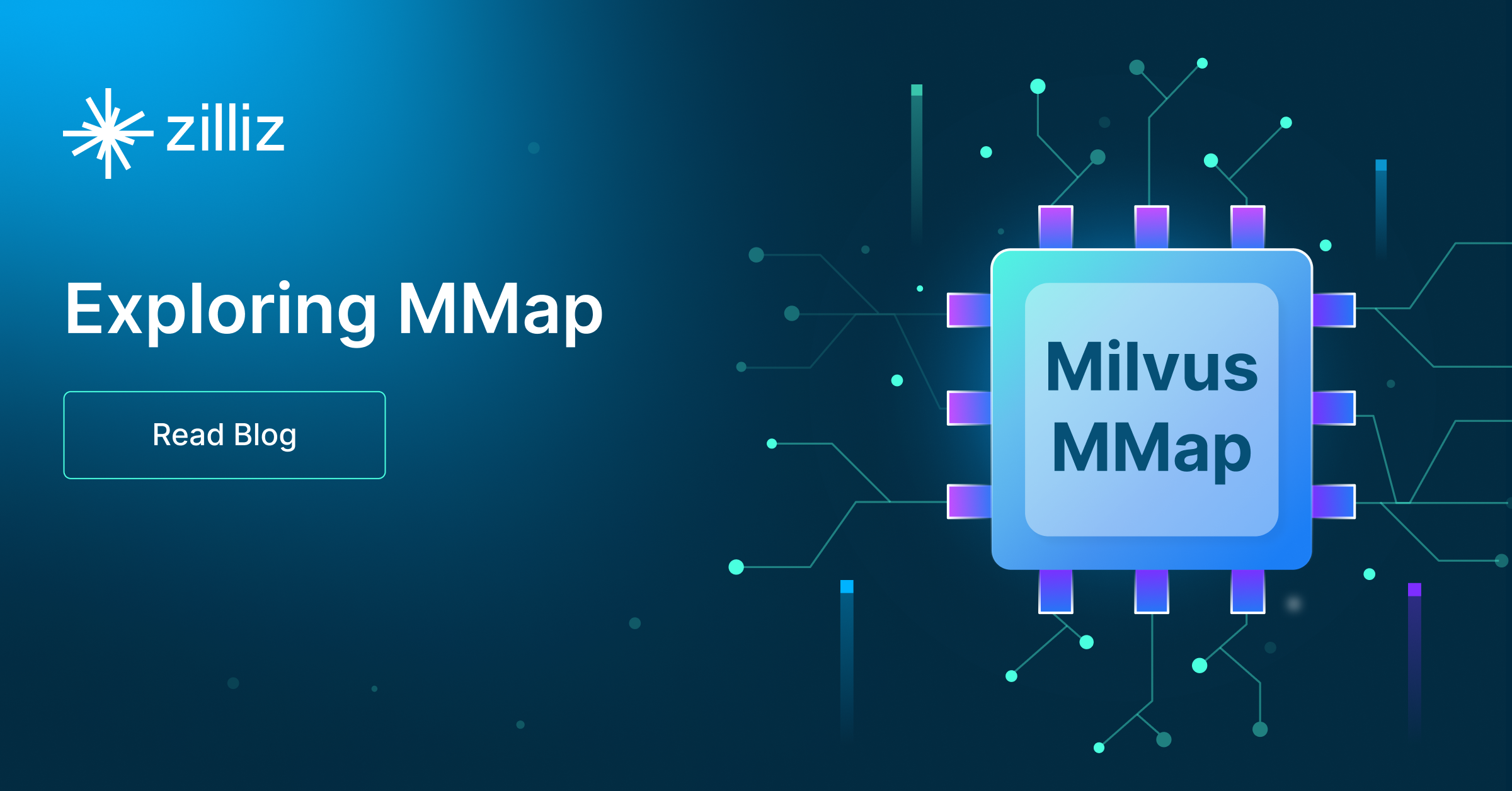Build RAG Chatbot with LangChain, Faiss, Google Vertex AI Claude 3 Haiku, and Google Vertex AI textembedding-gecko@003
Introduction to RAG
Retrieval-Augmented Generation (RAG) is a game-changer for GenAI applications, especially in conversational AI. It combines the power of pre-trained large language models (LLMs) like OpenAI’s GPT with external knowledge sources stored in vector databases such as Milvus and Zilliz Cloud, allowing for more accurate, contextually relevant, and up-to-date response generation. A RAG pipeline usually consists of four basic components: a vector database, an embedding model, an LLM, and a framework.
Key Components We'll Use for This RAG Chatbot
This tutorial shows you how to build a simple RAG chatbot in Python using the following components:
- LangChain: An open-source framework that helps you orchestrate the interaction between LLMs, vector stores, embedding models, etc, making it easier to integrate a RAG pipeline.
- Faiss: also known as Facebook AI Similarity Search, is an open-source vector search library that allows developers to quickly search for semantically similar multimedia data within a massive dataset of unstructured data. (If you want a much more scalable solution or hate to manage your own infrastructure, we recommend using Zilliz Cloud, which is a fully managed vector database service built on the open-source Milvus and offers a free tier supporting up to 1 million vectors.)
- Google Vertex AI Claude 3 Haiku: A versatile model within Google’s Vertex AI ecosystem, it is designed for seamless integration and enhanced generative capabilities. It excels in natural language processing tasks, such as text generation, summarization, and conversational AI. Ideal for businesses seeking to leverage AI for robust, scalable applications in various domains.
- Google Vertex AI textembedding-gecko@003: This model specializes in generating high-quality text embeddings for diverse applications, including semantic search and content recommendation. It leverages advanced techniques for contextual understanding, ensuring accurate representations of intricate text. Ideal for integration into systems needing scalable and efficient NLP solutions, enhancing user experience in real-time applications.
By the end of this tutorial, you’ll have a functional chatbot capable of answering questions based on a custom knowledge base.
Note: Since we may use proprietary models in our tutorials, make sure you have the required API key beforehand.
Step 1: Install and Set Up LangChain
%pip install --quiet --upgrade langchain-text-splitters langchain-community langgraph
Step 2: Install and Set Up Google Vertex AI Claude 3 Haiku
pip install -qU "langchain[google-vertexai]"
# Ensure your VertexAI credentials are configured
from langchain.chat_models import init_chat_model
llm = init_chat_model("claude-3-haiku@20240307", model_provider="google_vertexai")
Step 3: Install and Set Up Google Vertex AI textembedding-gecko@003
pip install -qU langchain-google-vertexai
from langchain_google_vertexai import VertexAIEmbeddings
embeddings = VertexAIEmbeddings(model="textembedding-gecko@003")
Step 4: Install and Set Up Faiss
pip install -qU langchain-community
from langchain_community.vectorstores import FAISS
vector_store = FAISS(embedding_function=embeddings)
Step 5: Build a RAG Chatbot
Now that you’ve set up all components, let’s start to build a simple chatbot. We’ll use the Milvus introduction doc as a private knowledge base. You can replace it with your own dataset to customize your RAG chatbot.
import bs4
from langchain import hub
from langchain_community.document_loaders import WebBaseLoader
from langchain_core.documents import Document
from langchain_text_splitters import RecursiveCharacterTextSplitter
from langgraph.graph import START, StateGraph
from typing_extensions import List, TypedDict
# Load and chunk contents of the blog
loader = WebBaseLoader(
web_paths=("https://milvus.io/docs/overview.md",),
bs_kwargs=dict(
parse_only=bs4.SoupStrainer(
class_=("doc-style doc-post-content")
)
),
)
docs = loader.load()
text_splitter = RecursiveCharacterTextSplitter(chunk_size=1000, chunk_overlap=200)
all_splits = text_splitter.split_documents(docs)
# Index chunks
_ = vector_store.add_documents(documents=all_splits)
# Define prompt for question-answering
prompt = hub.pull("rlm/rag-prompt")
# Define state for application
class State(TypedDict):
question: str
context: List[Document]
answer: str
# Define application steps
def retrieve(state: State):
retrieved_docs = vector_store.similarity_search(state["question"])
return {"context": retrieved_docs}
def generate(state: State):
docs_content = "\n\n".join(doc.page_content for doc in state["context"])
messages = prompt.invoke({"question": state["question"], "context": docs_content})
response = llm.invoke(messages)
return {"answer": response.content}
# Compile application and test
graph_builder = StateGraph(State).add_sequence([retrieve, generate])
graph_builder.add_edge(START, "retrieve")
graph = graph_builder.compile()
Test the Chatbot
Yeah! You've built your own chatbot. Let's ask the chatbot a question.
response = graph.invoke({"question": "What data types does Milvus support?"})
print(response["answer"])
Example Output
Milvus supports various data types including sparse vectors, binary vectors, JSON, and arrays. Additionally, it handles common numerical and character types, making it versatile for different data modeling needs. This allows users to manage unstructured or multi-modal data efficiently.
Optimization Tips
As you build your RAG system, optimization is key to ensuring peak performance and efficiency. While setting up the components is an essential first step, fine-tuning each one will help you create a solution that works even better and scales seamlessly. In this section, we’ll share some practical tips for optimizing all these components, giving you the edge to build smarter, faster, and more responsive RAG applications.
LangChain optimization tips
To optimize LangChain, focus on minimizing redundant operations in your workflow by structuring your chains and agents efficiently. Use caching to avoid repeated computations, speeding up your system, and experiment with modular design to ensure that components like models or databases can be easily swapped out. This will provide both flexibility and efficiency, allowing you to quickly scale your system without unnecessary delays or complications.
Faiss Optimization Tips
To enhance the performance of the Faiss library in a Retrieval-Augmented Generation (RAG) system, begin by selecting the appropriate index type based on your data volume and query speed requirements; for example, using an IVF (Inverted File) index can significantly speed up queries on large datasets by reducing the search space. Optimize your indexing process by using the nlist parameter to partition data into smaller clusters and set an appropriate number of probes (nprobe) during retrieval to balance between speed and accuracy. Ensure the vectors are properly normalized and consider using 16-bit or 8-bit quantization during indexing to reduce memory footprints for large datasets while maintaining reasonable retrieval accuracy. Additionally, consider leveraging GPU acceleration if available, as Faiss highly benefits from parallel processing, leading to faster nearest neighbor searches. Continuous fine-tuning and benchmarking with varying parameters and configurations can guide you in finding the most efficient setup specific to your data characteristics and retrieval requirements.
Google Vertex AI Claude 3 Haiku optimization tips
Claude 3 Haiku on Google Vertex AI is designed for low-latency RAG applications requiring fast retrieval and generation. Optimize retrieval by using efficient vector search techniques to minimize irrelevant data in the context. Keep prompts short and structured to maximize clarity while reducing token usage. Set temperature between 0.1 and 0.3 for fact-based queries to maintain accuracy. Use Google Cloud’s auto-scaling and caching features to handle peak loads effectively. If deploying in a multi-model setup, reserve Haiku for fast, high-volume tasks while offloading complex reasoning to larger models. Implement response streaming for real-time applications to reduce latency and improve interactivity.
Google Vertex AI textembedding-gecko@003 optimization tips
Google Vertex AI textembedding-gecko@003 is designed for advanced text understanding, making it ideal for high-accuracy RAG applications. Optimize embedding generation by removing noisy data and focusing on the most relevant content within documents. Use efficient vector search algorithms, such as FAISS with IVF or HNSW, to ensure fast and accurate document retrieval. Batch text embeddings for large volumes of data to speed up processing and minimize latency. Implement caching for high-frequency queries and periodically refresh embeddings to keep up with changes in the data landscape. Fine-tune the model on domain-specific tasks to improve relevance in specialized RAG applications. Consider deploying a multi-stage search strategy with semantic and keyword-based approaches for optimal accuracy and performance.
By implementing these tips across your components, you'll be able to enhance the performance and functionality of your RAG system, ensuring it’s optimized for both speed and accuracy. Keep testing, iterating, and refining your setup to stay ahead in the ever-evolving world of AI development.
RAG Cost Calculator: A Free Tool to Calculate Your Cost in Seconds
Estimating the cost of a Retrieval-Augmented Generation (RAG) pipeline involves analyzing expenses across vector storage, compute resources, and API usage. Key cost drivers include vector database queries, embedding generation, and LLM inference.
RAG Cost Calculator is a free tool that quickly estimates the cost of building a RAG pipeline, including chunking, embedding, vector storage/search, and LLM generation. It also helps you identify cost-saving opportunities and achieve up to 10x cost reduction on vector databases with the serverless option.
 Calculate your RAG cost
Calculate your RAG cost
What Have You Learned?
What have you learned? You’ve just embarked on an exciting journey through the realms of modern AI, and what a ride it’s been! By leveraging cutting-edge technology, you've discovered how to integrate a framework like LangChain, which gracefully ties together all components of your Retrieval-Augmented Generation (RAG) system. You’ve seen how a vector database like Faiss can supercharge your searches, enabling incredibly fast access to information, ensuring that your applications are not only efficient but also responsive to user needs.
The magic doesn't stop there! With the powerful LLM, Google Vertex AI Claude 3 Haiku, you’ve unlocked conversational intelligence, allowing your applications to respond naturally and engage users in meaningful dialogues. And let’s not forget the embedding model—using Google Vertex AI textembedding-gecko@003—you’ve generated rich semantic representations, transforming raw data into insights that are both comprehensible and impactful.
Along the way, we’ve shared tips for optimization to enhance performance, and even a free cost calculator to help you manage resources efficiently. Now the ball is in your court! It’s time to roll up your sleeves, get creative, and start building your own innovative RAG applications. The tools and knowledge are at your fingertips—so go ahead, experiment, optimize, and let your imagination take flight! The future of AI is bright, and you’re right in the driver’s seat. Let's see what remarkable creations you conjure up!
Further Resources
🌟 In addition to this RAG tutorial, unleash your full potential with these incredible resources to level up your RAG skills.
- How to Build a Multimodal RAG | Documentation
- How to Enhance the Performance of Your RAG Pipeline
- Graph RAG with Milvus | Documentation
- How to Evaluate RAG Applications - Zilliz Learn
- Generative AI Resource Hub | Zilliz
We'd Love to Hear What You Think!
We’d love to hear your thoughts! 🌟 Leave your questions or comments below or join our vibrant Milvus Discord community to share your experiences, ask questions, or connect with thousands of AI enthusiasts. Your journey matters to us!
If you like this tutorial, show your support by giving our Milvus GitHub repo a star ⭐—it means the world to us and inspires us to keep creating! 💖
- Introduction to RAG
- Key Components We'll Use for This RAG Chatbot
- Step 1: Install and Set Up LangChain
- Step 2: Install and Set Up Google Vertex AI Claude 3 Haiku
- Step 3: Install and Set Up Google Vertex AI textembedding-gecko@003
- Step 4: Install and Set Up Faiss
- Step 5: Build a RAG Chatbot
- Optimization Tips
- RAG Cost Calculator: A Free Tool to Calculate Your Cost in Seconds
- What Have You Learned?
- Further Resources
- We'd Love to Hear What You Think!
Content
Vector Database at Scale
Zilliz Cloud is a fully-managed vector database built for scale, perfect for your RAG apps.
Try Zilliz Cloud for Free


